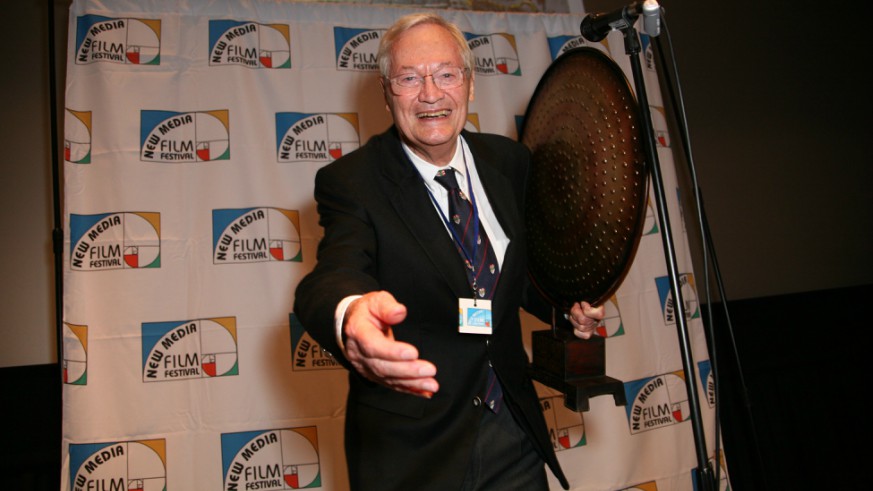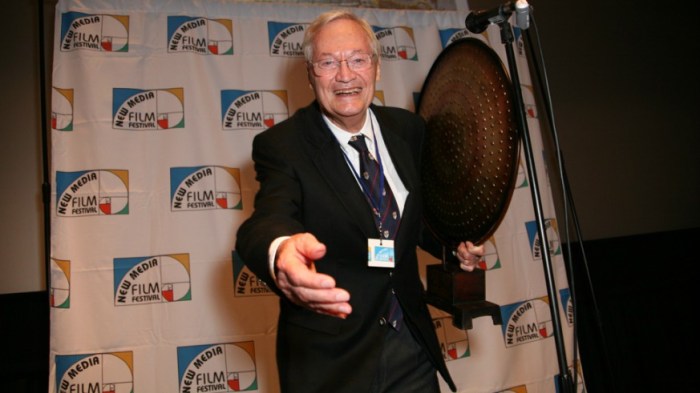While only major cinephiles have probably heard of Roger Corman, his impact on the medium is immeasurable.
So it is little surprise that on Thursday night New York City’s Metrograph will host An Evening With Roger Corman, which includes screenings of his classic films “The Intruder” and “The Pit And The Pendulum” and then introductions and a Q&A with the legendary director.
I recently had the chance to speak to Corman ahead of the Academy Of Motion Picture Arts and Science event, and he was more than happy to go down memory lane with me.
What are your memories of “The Intruder”?
Primarily “The Intruder” was shot in the 1960s, which was just the beginning of racial integration of schools in the south. We had a great deal of trouble. Including some death threats. I remember on the final night of shooting we had a Ku Klux Klan parade to shoot and we were staying at this motel. I said to everybody, ‘Just pack your stuff. Everybody put your suitcases in the truck. We are not coming back to the motel.’ Because we had had a threat that night. So I said, ‘We will shoot the parade. We will pack the stuff and make it look like we are coming back to the hotel. But we are going to drive straight to St Louis all night long.’
That’s insane.
It was insane. It was an interesting night’s drive. Well, for an hour. After an hour we felt like we were OK.
What was the idea behind making the film, did you want to try and open some eyes?
It was partially that. I was very much interested in the problem of the integration in schools, and very much pro integration. I thought this was a dramatic subject that we could make an interesting film on and that I could make a statement within the film itself.
What do you remember about working with William Shatner?
Bill was brilliant in the film. It was his first film in fact. He was playing leads on Broadway and came to Hollywood, it might have even been his first audition. I just knew he was the best choice for Adam Kramer, the lead in the film. He was an actor of great depth. Because Adam Kramer was an agitator who had come to this small southern town. On the surface he had to be gracious and smiling and pleasant to everybody. But under the surface he was a very vicious man, intent on creating a riot. And Bill had the complexity to do it on both levels.
What about “The Pit and The Pendulum” then, what attracted you to the Edgar Allen Poe novel?
I had done a number of low budget horror films. The way we worked at that time was you would put together two 10-day black and white horror films and send them out to the theaters as two pictures for the price of one. American International, the company I was at, wanted me to continue to do that, but I was getting tired of it. I thought it was a sales gimmick that was wearing itself out. So I said, ‘Let me have 3 weeks instead of 2 weeks and shoot in color and send it out as a single film.’ They asked me what I wanted to do and I said, ‘’The Fall Of The House Of Usher’ with Vincent Price.’ Who I thought was perfect for Roderick Usher. The film was quite successful, and I was asked to do another Poe film. I had always liked “The Pit And The Pendulum.”
What made Vincent Price such a star?
He was a highly intelligent man. He was a very creative actor that could play on many levels. So sophisticated as an actor. He brought so much neurosis to Roderick Usher. Vincent was absolutely perfect to bring out the sensitivity, aristocratic and intelligence of the character, who also had a trace of insanity about him.
You were so good at tapping into the zeitgeist with your films, talk me through that your process for picking them.
I first thought of the Poe film because I thought it was told with the unconscious mind. That gave me a chance to be creative in portraying the text of what was going on and the subtext of what was going on in Vincent’s mind. I was also able to play around, using the limited special effects that we had at the time in 1959 or 1960, with the unconscious mind. I did 6 Edgar Allan Poe films, they were all successful. American International wanted me to do more, but I thought I was repeating myself. I had to move onto something else. I didn’t want to do the same film over and over. This was the early 60s, which was the beginning of the counter culture, the unrest, and the Hells Angels motorbike gang was very well known. I wanted to get away from the studio so that I could shoot on the street. And the Hells Angels gave me the chance to get out and shoot a whole action picture on the streets, which was “The Wild Angels.” And also make a little bit of a comment. I thought there was a working class rebellion working within the Hells Angels. I wanted to bring that out. The fact that they were creating a culture of their own. The fact that they didn’t fit, so they created their own culture. The film did very well. It was the opening night of the Venice Film Festival. So I decided to stay with the counter culture, and did a film called “The Trip,” which about an LSD trip. And again, particularly with the LSD sequences, I was able to do the special effects that I had done in the Poe film. But rather than being with the unconscious mind, I was doing the effects on the LSD trip, knowing that you couldn’t really replicate what goes on in an LSD trip. It was just too overwhelming. I took one trip myself, as a conscious director. So I knew what I was doing. The experience was just too overwhelming that I knew I couldn’t recreate everything that I was doing. I did as much as I could with the effects that I could at the time. Again the film was successful. It was one of only two American films invited to the Cannes Festival that year.
Talk a little bit more about “The Trip,” what did you want to do with that film.
The idea was to get inside an LSD experience. But compared with “The Wild Angels” that tried to say that this was essentially a working class rebellion, “The Trip” was more of a middle class, a higher level of society, which was a very popular at the time and considered to be very dangerous. The government were saying that people were dying from LSD and so forth. Which I never believed and assumed was just made up information from the government to try and discourage people from taking the drug. Which proved to be true.
What’s the proudest moment of your career?
I wouldn’t say there was one moment. I would say the fact that I was able to move and stay occurrent, as it were, in films, starting in the late 50s all the way to today. John Davidson, who started many years ago as my assistant when he came out of NYU, I had lunch with him recently and he said he was retiring. I said, ‘John, I always thought of you as the kid in the office and now you are retiring. Maybe it is time for me to retire.’ And he said, ‘You’re too old to retire.’
















